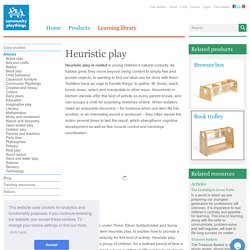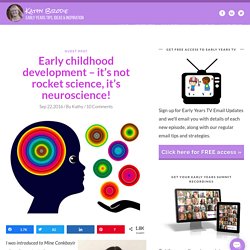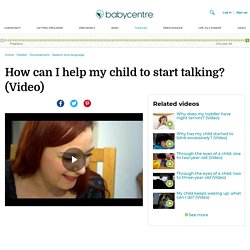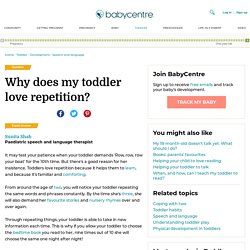Talert
Community Playthings. Heuristic play is rooted in young children’s natural curiosity.

As babies grow, they move beyond being content to simply feel and ponder objects, to wanting to find out what can be done with them. Toddlers have an urge to handle things: to gather, fill, dump, stack, knock down, select and manipulate in other ways. Household or kitchen utensils offer this kind of activity as every parent knows, and can occupy a child for surprising stretches of time. When toddlers make an enjoyable discovery – for instance when one item fits into another, or an interesting sound is produced – they often repeat the action several times to test the result, which strengthens cognitive development as well as fine muscle control and hand/eye coordination. In their book, People under Three, Elinor Goldschmied and Sonia Jackson coined the term heuristic play, to explain how to provide a more structured opportunity for this kind of activity. Heuristic play with objects is not a novel idea.
The Power of Evening Routines. The word “structure” can evoke less than positive associations. It suggests constraints, which are never a good thing, right? Wrong. It turns out that everyone benefits from a certain amount of daily structure, so long as that structure is pleasant, productive, and meaningful.
Whether it’s the most inventive minds in history, or those people who live in good health past 100, a daily routine or set of micro-routines is correlated with productivity, health, and longevity. As beneficial as routines are for artists and centenarians, they are even more essential for children. Not surprisingly, children from unstructured homes often struggle in school. In order to support families of school-aged children, I surveyed best practices in child development and operationalized them in a two-hour school night routine, which I call “prime-time parenting” (which is also the title of my recent book). 6:30 p.m. – The Dinner Half-Hour: Enjoy a nutritious dinner as a family.
How do you speak 'Motherese'?
News BBC News Navigation Sections Previous Next Media player Media playback is unsupported on your device.
The Woman Who Changed Her Brain: Barbara Arrowsmith-Young at TEDxToronto. How baby brains develop. Early childhood development – it’s not rocket science, it’s neuroscience!
I was introduced to Mine Conkbayir when she contacted me about neuroscience informing early years practice, which I think is such an exciting, and growing, area of study.

So I was very enthusiastic when she offered to do a guest post on this subject. Here she discusses how neuroscience can add another dimension to our understanding of child development: Like many individuals in this increasingly frantic world, I’m often busy juggling my responsibilities as a parent while I work and continue my studies – a very exciting journey as I try to achieve my PhD in early childhood education and neuroscience. Having been a lecturer across a range of child care and education qualifications for the past 14 years, I continue to be bewildered by the lack of consistently embedded teaching of neuroscience and early brain development across these qualifications.
Multilingual Preschoolers. It’s amazing how young children learn to converse with others.
They have to not only internalize grammar and vocabulary, but also develop an understanding of culture: how to take turns in a conversation, who to talk to, and how to narrate a story. For dual language learners (DLLs) — children under the age of 5 with a home language other than English — that process can be complex. These young children must constantly navigate between two languages and cultures, while learning the rules of both.
How can I help my child to start talking? (Video)
Health visitor Sara Patience describes how you can help develop your child's language skills by talking and playing with her.

Show transcript. Why does my toddler love repetition?
Paediatric speech and language therapist It may test your patience when your toddler demands 'Row, row, row your boat' for the 10th time.

But there's a good reason for her insistence. Toddlers love repetition because it helps them to learn, and because it's familiar and comforting. From around the age of two, you will notice your toddler repeating the same words and phrases constantly.
Let's Talk. What do babies need in order to learn and thrive? One thing they need is conversation — responsive, back-and-forth communication with their parents and caregivers.
Listen to Your Mother.
Young children face a remarkable challenge in learning to use the language of their culture. Toddlers vary widely, however, in the rate at which they learn new words.1 A team of Harvard Graduate School of Education researchers set out to ask whether and how children's language environment can impact vocabulary development. In their study of mother-child pairs from low-income families, they found that mothers who used many different words (not just many words) had toddlers with faster growth in vocabulary use.
Deb Roy: The birth of a word. FAQ: Raising Bilingual Children. Why want bilingual children? There are many reasons, but the two most common are: 1) The parents speak different languages (say, an American woman and a Turkish man). 2) The parents speak the same language, but live in a community where most people speak something else (say, a Korean couple living in the USA).
In the first case, both the mother and father may want to be able to use their own language when talking to their children. This is the bilingual home situation. Don't children get confused when they hear two languages spoken around them? The short answer is no.
Being Multilingual: You speak with an accent. I don’t.
Accents are things that only other people have. They are, by extension, things that you don’t want to have. Accents are, in short, shortcomings. This is why, if someone tells you that “you speak with no accent”, you can be sure of two things: that you have received words of praise indeed; and that you speak with the same accent as that person. So the person is actually not only praising her own accent, she is also giving evidence that she has no idea she’s got one. We seldom hear people say “We speak with an accent” or “I speak with an accent” – unless we’re talking about our uses of foreign languages. So let’s check out your accent. This is (choose the nearest answer – I was going to say “the best answer”, but I suddenly remembered that “best” has prescriptive connotations):
The Power of Evening Routines. How do you speak 'Motherese'?
The Woman Who Changed Her Brain: Barbara Arrowsmith-Young at TEDxToronto.
How baby brains develop. Early childhood development – it’s not rocket science, it’s neuroscience!
Multilingual Preschoolers. How can I help my child to start talking? (Video)
Why does my toddler love repetition?
Let's Talk. Listen to Your Mother. Deb Roy: The birth of a word. FAQ: Raising Bilingual Children.




